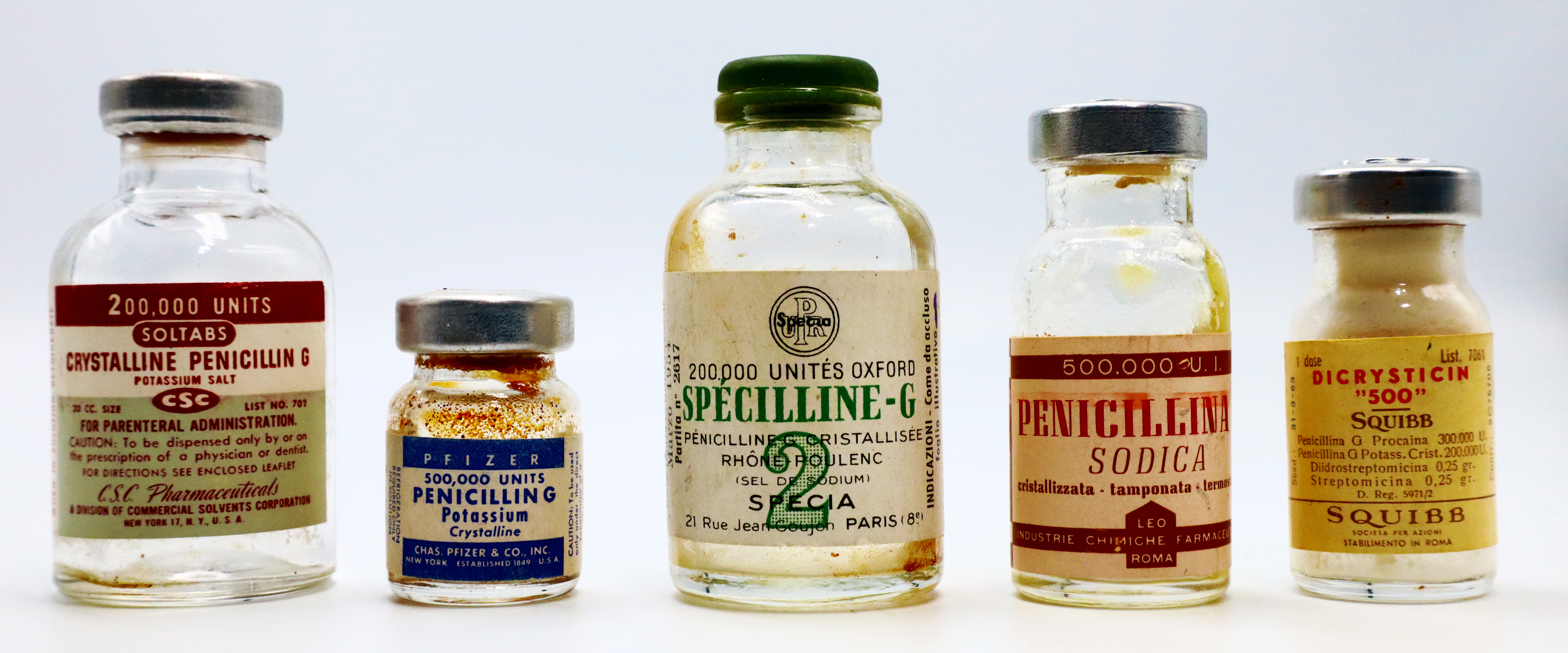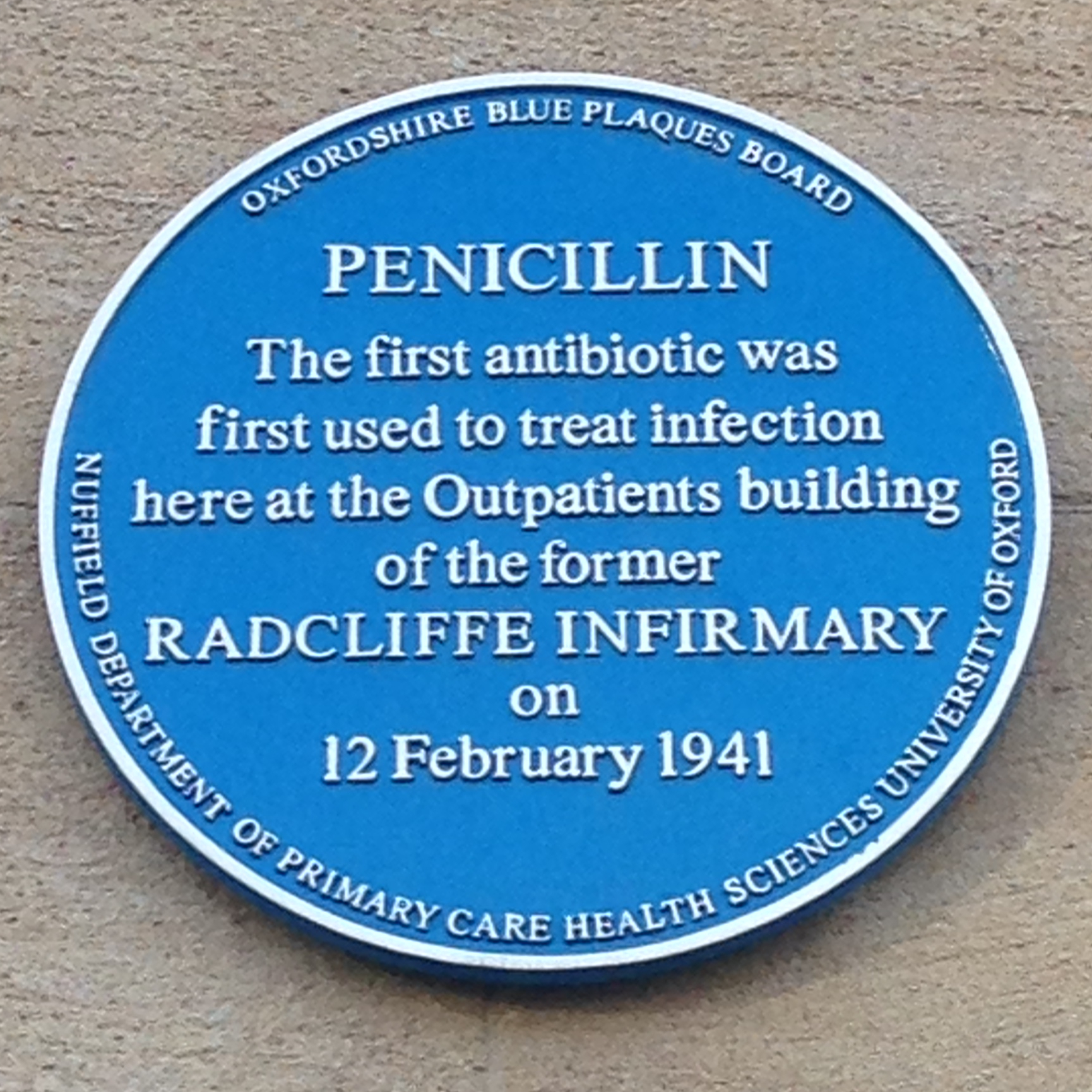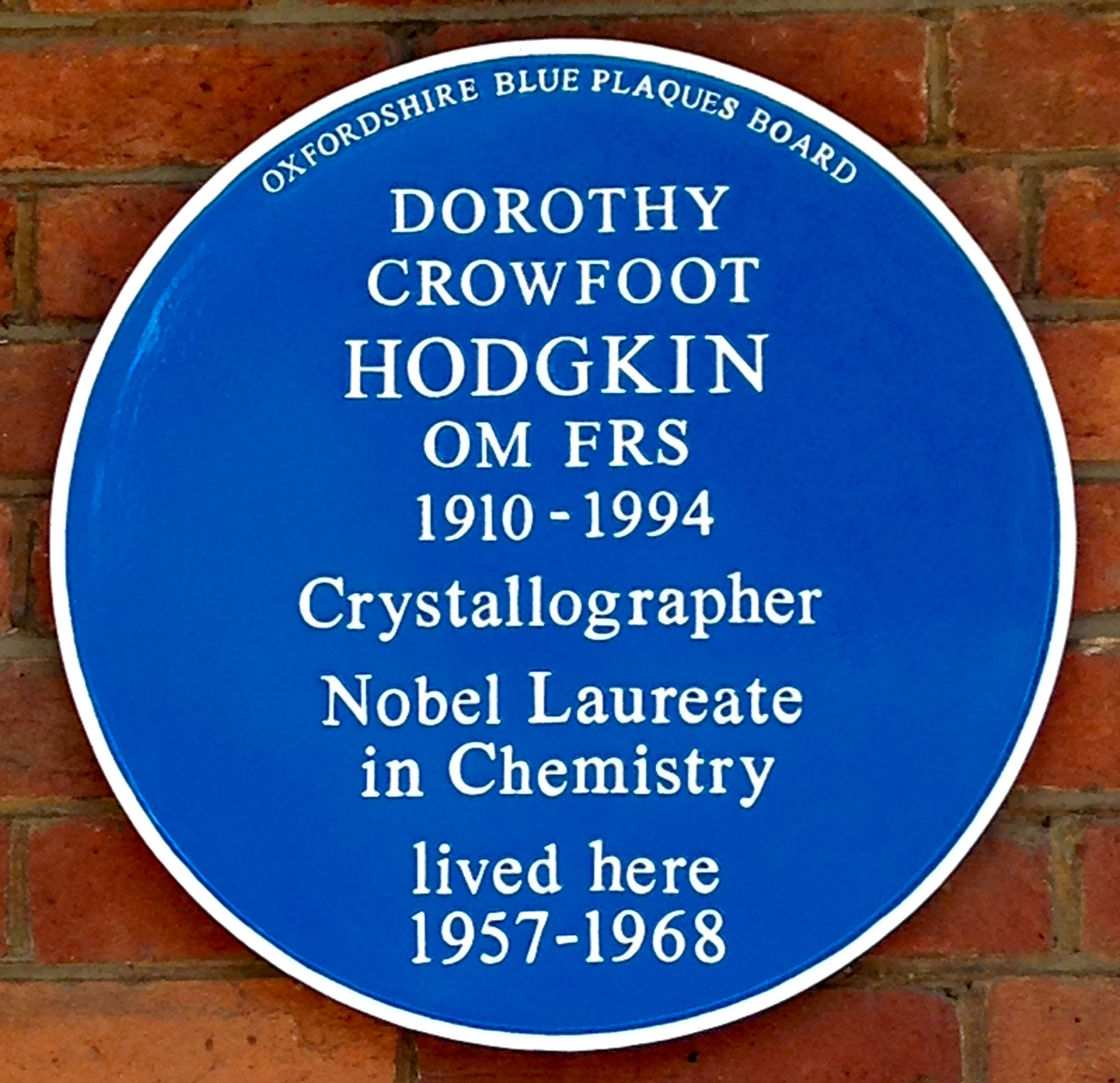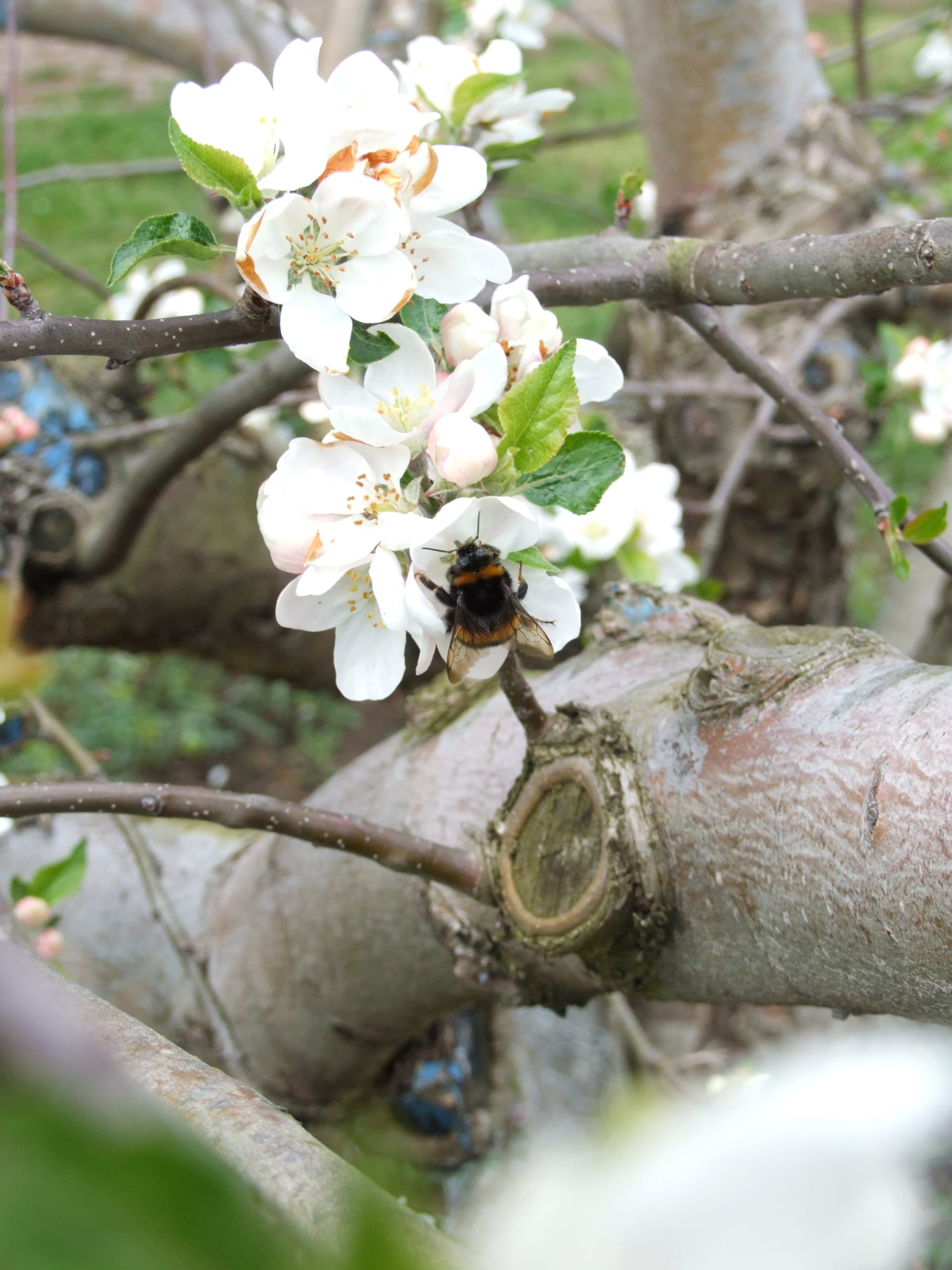Penicillin
Penicillin has one of the most well-known origin stories of any scientific discovery – perhaps only rivalled by Archimedes’ original ‘Eureka!’ moment. In 1928, Alexander Fleming returned from holiday to his untidy lab at St Mary’s Hospital in London and found a mould colony growing in one of his petri dishes. He noticed that the mould, Penicillium notatum, had limited the growth of the Staphylococcus bacteria in the dish and deduced that it was producing a defensive antibacterial substance that he named penicillin.
When Fleming published his work the response from the scientific community was mild. He assembled a team to work out a process to extricate penicillin from the mould that produced it, but they were ultimately unsuccessful, and Fleming gave up on it. Fast-forward to 1938, and a team from Oxford took up the challenge.
Howard Florey and Ernst Chain discovered Fleming’s work and began the Penicillin Project to try and succeed where he had failed. The work was painstakingly complex and difficult, and three years later, though they had a process to produce pure penicillin, it was incredibly inefficient. Many litres of the mould ‘broth’ were needed to get just a tiny amount of the wonder drug – one that early animal trials had shown to be miraculous at defeating infection.
Slowly, the Dunn School of Pathology on Parks Road became a penicillin factory. By 1941 they had enough for a human trial where again, penicillin showed its world-changing potential. This first trial was done on 43-year-old policeman Albert Alexander, who, having initially rallied from his infection, sadly died a few days later as the penicillin ran out. The mass-production of penicillin was the next challenge, and due to the Second World War demanding all the industrial resources of Great Britain, the team looked across the pond.
To date, penicillin is thought to have saved 200 million lives worldwide. It ushered in the era of antibiotics and represented a true paradigm shift in medicine. As so often happens in science, it took multiple individuals having a bite of the apple, passing the torch down through the years to turn a serendipitous discovery from a cluttered lab into a wonder drug. In 1945, Alexander Fleming, Ernst Chain and Howard Florey shared the Nobel Prize in Medicine.


Antibodies
Just behind South Parks Rd, opposite the grand new Life and Mind Building, stands an altogether more unassuming edifice named for an extraordinary scientist, Rodney Porter. Appointed the Whitley Professor of Biochemistry at Oxford in 1967, Porter’s work was on the precise structure of antibodies in the burgeoning field of immunochemistry. Porter succeeded in breaking up immensely complex antibody molecules into smaller parts using an enzyme. He was then able to confirm what had been proposed by his contemporary, Gerald Edelman – that antibodies had a ‘Y’ shape structure with two sets of nearly identical chains.
These fundamental insights into the structure of antibodies paved the way for more discoveries about our immune system, and the mind-bending ways in which it protects us from disease. Or, as it was rather beautifully put in the presentation speech for the Nobel Prize that Porter and Edelman shared in 1972, they “opened the sluice-gates and gave impetus to the flood of research that soon started gushing forth, irrigating previously arid land, making it fertile and producing rich harvests.”

Lithium-ion batteries
For centuries, chemists have known about lithium and its fascinating properties. Lithium atoms are very small, comprising three electrons, three protons and four neutrons. Its propensity to give up one of its electrons makes it very reactive. This same electron-giving property is also what makes lithium a prime candidate for electrochemical uses.
Nowadays it’s so completely normal to think of recharging a battery that it’s difficult to imagine the incremental advances in science and technology that produced it. The story of the lithium-ion battery is one of steady, sequential improvement, with each major protagonist taking on and improving upon the previous work.
The American materials scientist John B Goodenough, working with his team at Oxford in 1980, made a crucial contribution to the modern lithium-ion battery. Specifically, they developed new lightweight, energy dense materials that doubled battery capacity and paved the way for further upgrades. Lithium-ion batteries are now ubiquitous, indeed, there’s probably one in your pocket. Goodenough shared the Nobel Prize in Chemistry in 2019.

X-ray Crystallography
Scientists have probed the properties of molecules for millennia. Of all properties, the precise atomic structure of a substance is perhaps the most illuminating. Understanding the precise arrangement of atoms within a compound and the lengths and types of its bonds can inform our understanding of the types of reactions it will undergo and give hints about its function. Diamonds and graphite have the exact same chemical composition – pure carbon – however, with different arrangements of and bonds between the carbon atoms, you get totally different properties.
Arriving at a specific structure is, to put it lightly, extremely difficult. The first advances in this area came from physics. Throughout the 1910s, various physicists posited then refined the idea that one could beam X-rays at a crystal (a material with a highly regular structure) and then use the diffraction pattern that results to determine aspects of the structure.
This technique inspired an avid young scientist called Dorothy Crowfoot Hodgkin, who was given a book on the subject, Concerning the Nature of Things, for her sixteenth birthday. At school, she had to fight to be allowed to take chemistry instead of domestic science with the other girls. She eventually found her way to Somerville College Oxford to study chemistry, graduating as only the third woman to obtain a first.

Returning to Oxford after her PhD, Hodgkin continued to advance X-ray crystallography, taking on increasingly more complex projects. In 1945, Hodgkin solved the structure of penicillin. With 17 atoms, this took four years to complete. Her next challenge was vitamin B12, which took eight years to solve its 118-atom structure. The most complex of all, insulin which contains 788 atoms, took 34 years to solve. She was awarded the Nobel Prize in Chemistry in 1964 for her work – she is, to date, the only British woman ever to receive this award.










